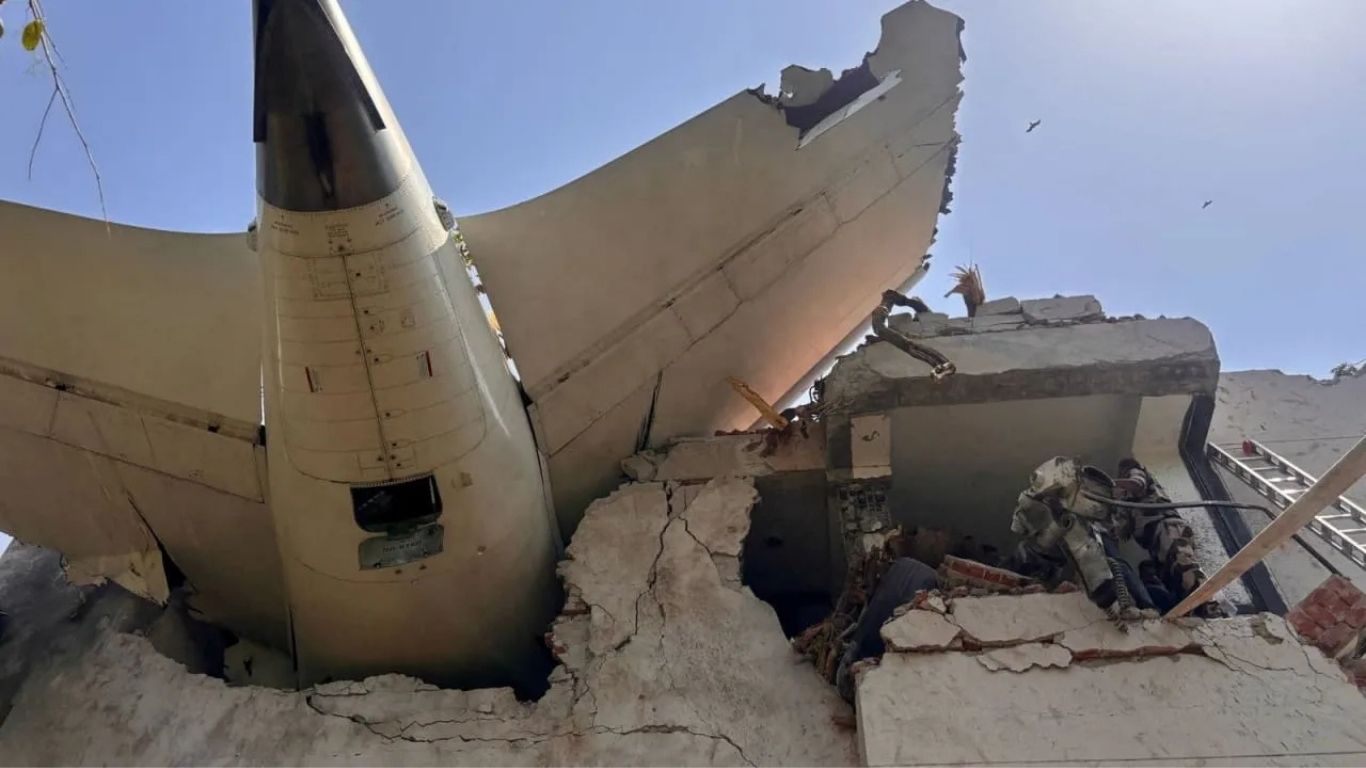Air pollution remains one of the globe’s most pressing environmental and health issues. Nineteen of the world’s top twenty most polluted cities are in Asia according to new statistics from Swiss air purifier technology firm IQAir. They are followed in order of ranking as India, Pakistan, China, and Kazakhstan. N’Djamena, the main city of Chad in central Africa, was the only city not in Asia to make it into the list.
The study highlights that air pollution remains a danger to tens of millions of people with serious respiratory and heart ailments and decreased life expectancy. There has been some improvement in China and some other nations with cleaner air, but huge populations of South Asia are still subjected to dangerous concentrations of the particularly dangerous pollutant fine particulate matter (PM2.5).
The following paper analyzes the causes of the alarming rates of pollution, their health impacts and economic costs, and the policy responses required to confront this growing crisis.
There are numerous reasons for Asia’s polluted cities.
The predominance of Asian cities in the top twenty most polluted places is not coincidental. A mix of fast industrialization, density of population, and weak environmental regulations has been responsible for diminishing air quality across the region.
- Coal and Fossil Fuels
India and China are the largest economies of the world and are reliant upon coal energy for their growth. It is one of the major causes of excessive emissions of PM2.5, emissions of nitrogen oxide, and sulfur dioxide emissions that have powered increasing air pollution. China has set bold plans for renewable energy transition but remains highly dependent upon coal.
- Traffic congestion and emissions from vehicles
New Delhi, Lahore, and Beijing are some of the most clogged cities. There are millions of motor vehicles—mostly old and poorly serviced—there that emit large quantities of carbon monoxide and hydrocarbons and particulate matter into the atmosphere. A lack of effective public transport encourages more people to travel in private transport, which also contributes to congestion.
- Industrialization and construction dust
Fast-growing cities like Byrnihat in India and Lahore in Pakistan have unregulated factories, steel plants, and cement plants. They emit dust and emissions that mix with deforestation and ill-planned city growth to produce poisonous shrouds of air around cities.
- Seasonal Factors: Crop Fire and Meteorological Patterns
Both North India and Pakistan are afflicted with worsening smog annually as farmers set fire to crop residue as stubble. This combines with temperature inversions that trap pollutants close to the ground to produce an annual health crisis in cities like Delhi, Lahore, and Kanpur.
- Wildfires and Dust Storms
Desert dust storms and wildfires are also natural causes contributing to bad air. Dust storms also occur in Kazakhstan and middle Asian cities and rise PM2.5 levels beyond safe limits. Wildfires are also the primary source of peaks in air pollution in the case of California, USA, for instance.
Health and Economic Consequences
The effects of air pollution are pervasive in extending to public health, economic performance, and overall quality of life.
- Respiratory Diseases and Premature Deaths
PM2.5 exposure has also been associated with lung disease, chronic bronchitis, and lung cancer as well as with asthma. IQAir’s studies warn that air pollution shortens lives by more than five years in highly polluted areas. Delhi and Lahore city hospitals observe increased cases of respiratory difficulties during peak season, heart attacks, and strokes.
- Mental Health Consequence
Long-term exposure to dirty air has been proven to increase the risk of depression and anxiety as well as cognitive impairment. Children are likely to develop cognitive delay and learning disability with prolonged exposure to pollution.
- Labor Productivity and Economic Losses
The World Bank estimates the price of air pollution in billions of dollars in productivity losses to the economies. Workers in polluted cities are typically chronically ill, hence less productive, more absent, and more costly to medically treat.
Can China’s air quality progress be emulated?
Deserving of note here is China—once infamous for smoggy air—where in recent years has seen a dramatic transformation. China’s air in the city of Beijing has been steadily improving due to rigorous pollution controls such as:
Gradually eliminating coal-burning plants in large cities
Strict car emission regulations and vehicle electrification
The massive investment in solar power and wind power
Government-mandated air pollution monitoring and enforcement
Despite all of those advancements, China is also struggling with growth in coal. China last year greenlit nearly 100 gigawatts of new coal plants in 2024, more than any decade on record. That puts at risk some of its clean-air progress.
The Role of Governments and International Cooperation
Air pollution is a cross-boundary issue and hence requires regional and international cooperation in order to combat it. Certain major steps which the government should adopt are:
- Strict vehicle and industry emissions standards
India and Pakistan need to adopt more strict vehicle emissions standards and phase out older diesel engines.
Industrial emissions should compulsorily be monitored with strict punishment for defaulters.
- Invest in Renewable Energy
Transition to solar, wind, and hydroelectric power significantly decreases coal usage.
Governments have to subsidize the installation of clean energy to encourage industries.
- Urban Planning and Public Transport
The expansion of the metro and bus systems reduces private travel significantly.
Green urban design with increased tree cover can rid cities of pollutants.
- Air Quality Monitoring and Public Awareness
There is also the need to invest in real-time air quality monitoring stations with a focus on under-monitored regions like Afghanistan and Africa.
Public campaigns can inform citizens about the reasons for pollution and encourage behavioral change like not incinerating crops.
- Cross-Border Cooperation
Regional pollution pacts can encourage cooperation between India, Pakistan, China, and Bangladesh to address shared causes of pollution.
Funding globally through organizations like the World Bank and UN can enable clean energy transitions.
Conclusion: A Call for Action
Air pollution remains one of the most dangerous environmental threats in the world today. According to the recent IQAir report, although some improvement has been registered in some countries, most of South Asia and parts of Central Asia remain trapped in the pattern of foul air.
Unless stronger policy, more urban planning, and more investments into renewables are put in place, many people will continue to suffer from poor health, reduced life expectancy, and economic losses.
The most important lesson of China’s recent growth is that progress is achievable but requires political determination, popular involvement, and effective enforcement mechanisms.
Unless the government intervenes, the same cities may be heading the list of most polluted cities globally within twelve months with disastrous long-term implications for generations to come.




